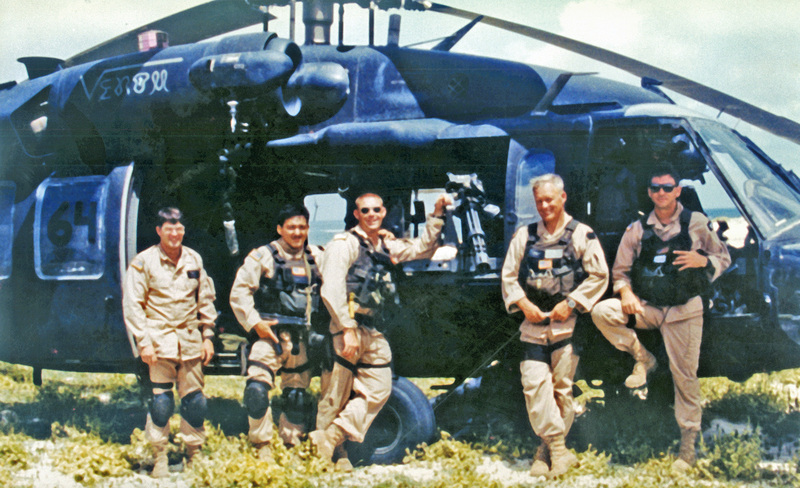Many people have seen the blockbuster action flick Black Hawk Down. Mixed in among all the Hollywood action and big movie stars is a tale of extreme heroism on the parts of two men. Mostly glossed over in the in favor of giving the big stars screen time, it is an inspiring tale.
Somalia in 1993 was a war zone. The country had descended into chaos following a coup against the democratically elected government in 1991. Competing clans under various warlords were attempting to gain control over the country.
Vast areas had been turned to rubble, and many people were killed or rendered refugees. Worst of all was the food situation. With the farmers turned into refugees, there was no food being produced.
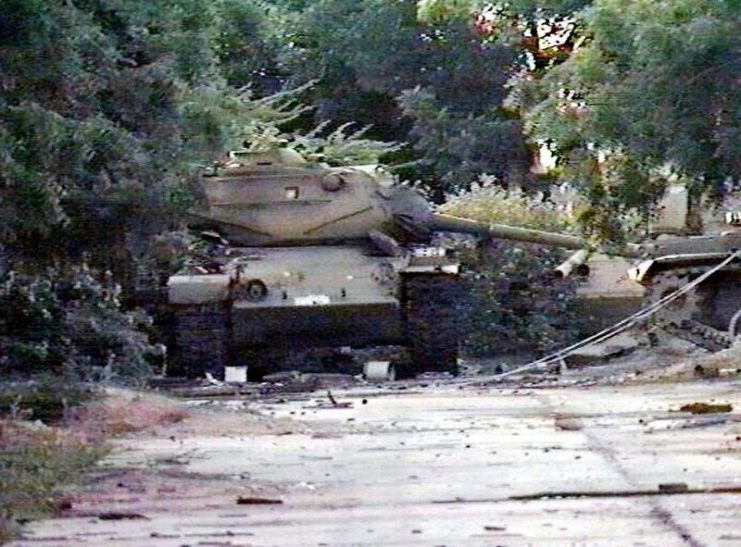
The United Nations (UN) stepped in to restabilize the country and bring aid to its starving people. Truck convoys began to bring thousands of tons of food to distribute.
Masses of refugees would crowd around desperately to obtain whatever they could. Warlords were quick to capitalize on this chaos. They would hijack food shipments, then trade it for guns in other countries.
The UN resolved to stop this, which meant more troops with more guns, and helicopters. Central to this UN peacekeeping force was a large American presence.
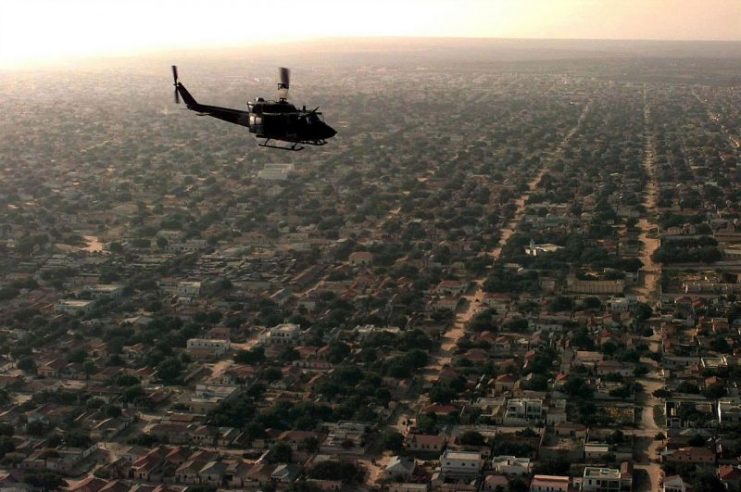
Within this larger American force was an elite group, code named Task Force Ranger. It was comprised of Army Rangers, Delta Force, SEALs, helicopter pilots from the Army’s 160th Special Operations Aviation Regiment, and other special operations forces. They were tasked with being the muscle and strike force to carry out special tasks.
In the post-Desert Storm era, American troops were at their most confident in decades. The stunning and short-lived campaign to liberate Kuwait and defeat Saddam Hussein had given them an aura of invincibility, one which they took seriously.
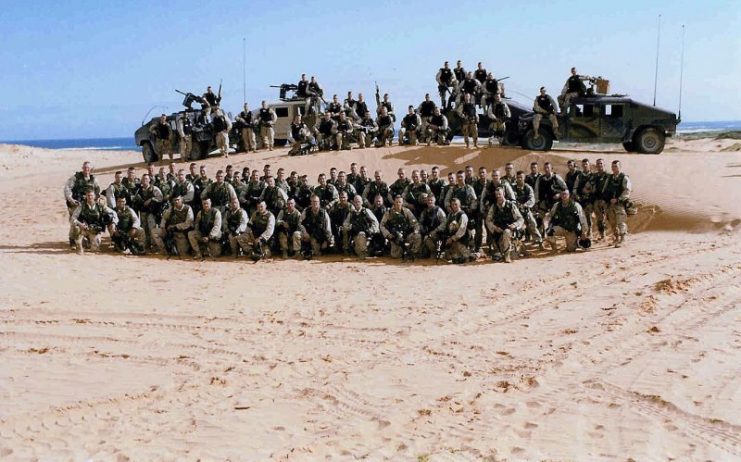
So when the UN command assigned them the mission of capturing key warlords, they went in with full confidence. The mission was very complex, but they only planned on it taking an hour at most. They embarked on the mission with a minimum of force and a maximum of technology.
Orbiting overhead were command helicopters and surveillance planes. The assault force would be deployed from helicopters. The plan called for seizing a target and ensuring no one could leave by placing Ranger elements at the corners. A small ground convoy would then come in to collect the prisoners as well as the assault force and drive out of the city.
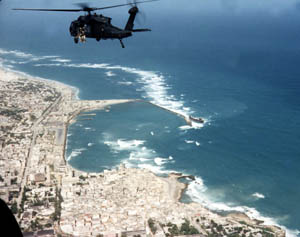
Almost immediately, the plan ran into difficulties. Local militias and citizens hostile to the American presence set up roadblocks of burning trash, tires and vehicles to prevent the Americans from getting in. In the air the situation was much more difficult. Dust and confusion caused elements of the team to be set down in the wrong order and wrong places.
Even once the assault force was in place, the real trouble had not yet begun. Somali tribesmen armed with RPG-7 rockets began to fire upon the American helicopters. This was not the first time they had done this as they had previously shot down a Blackhawk using an RPG.
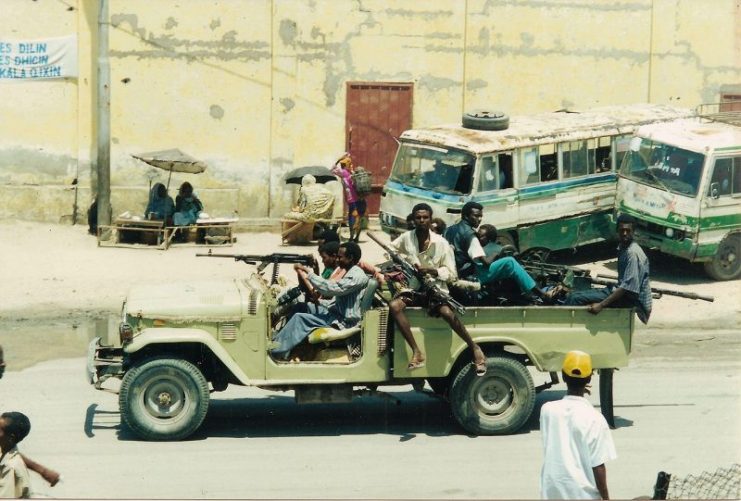
Today the situation would be much worse. After damaging one helicopter, the Somalis proceeded to successfully shoot down two more of the orbiting helicopters. The first one, codenamed Super 61, was able to be reached in short order by rescue forces which were able to create a strong defensive position, allowing them to wait out the night.
The second one, Super 64, is where our heroism begins. Shot down like the other by a hit from an enemy RPG, Super 64 went down carrying its crew of four men. Its crash site was surrounded by mobs and could not be reached by friendly ground forces.
Orbiting overhead aboard one of the support helicopters were Delta Snipers MSG Gary Gordon and SFC Randy Shughart. They immediately volunteered to land and secure the crash site. Two separate times their request was denied from higher headquarters, until at last their third request was granted.
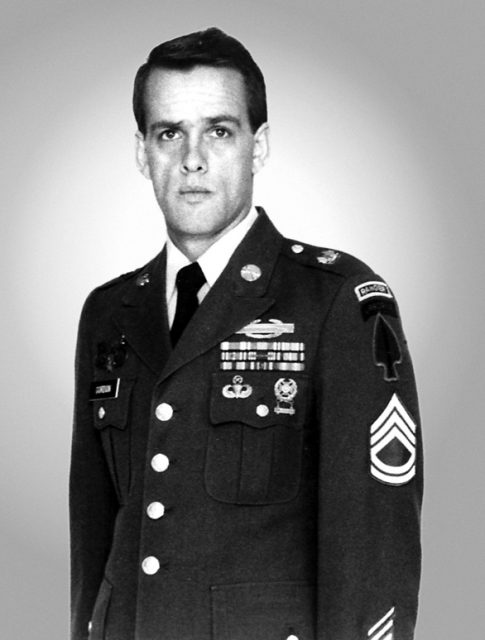
Set down close by the crash site, Gordon and Shughart jumped out from the helicopter and immediately went to the aid of the fallen men. Upon its crash the Blackhawk wreck had become a focus of enemy attention as well as fire. Though these two men saw that their mission was possibly a death ride, they still volunteered to go in.
Arriving at the wreck, they immediately did what they could against the overwhelming odds. One pilot was dead, the other was severely injured, but still fighting back as well as he could. The other two crew members were severely wounded and would die in the fight as well.
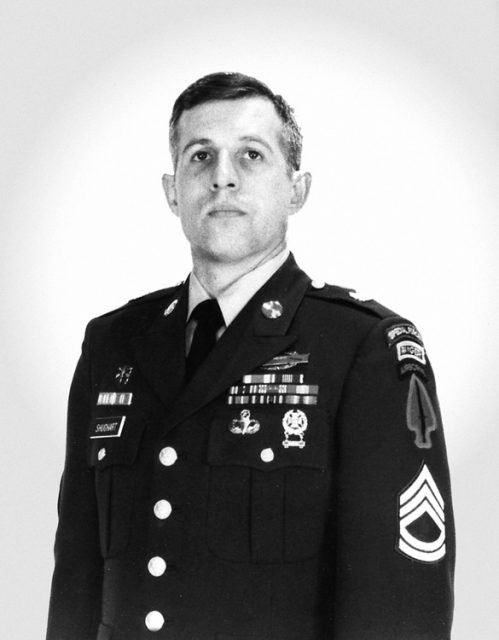
Read another story from us: 22 Facts You May Not Know About the Medal of Honor
Gordon and Shugart knew they were entering a losing fight, but still made the best of it. Each man took opposing positions to hold the enemy off as long as possible. Armed with their sniper rifles and handguns, they weren’t going to be able to succeed forever. As larger crowds converged, they were eventually overwhelmed. First Gordon and then Shughart were killed.
The surviving crew member was taken prisoner, and later released. Both sergeants posthumously received the Medal of Honor for their heroic actions that day. Seldom has there been such a clear example of going beyond the call of duty.
